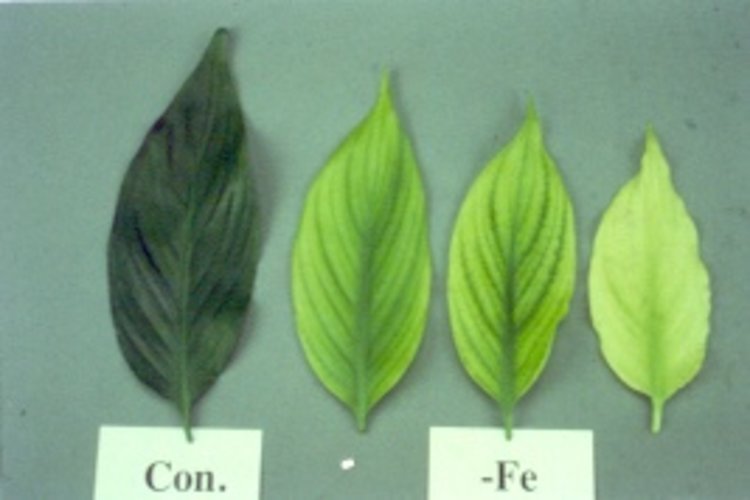Trace elements or micro elements are indispensable for the growth of a plant. Compared to the macro elements there is only a small amount necessary. This month everything about the trace element iron.
What is the function of iron?
Iron is part of various enzymes that take care of the development of chlorophyll in the plant, the plant process photosynthesis and the breathing processes. The iron content in the plant is often between 0,003 and 0,017 percent of the dry matter. It is remarkable that at crop analyses of plants with iron deficiency, sometimes (more than) enough iron is found after all. In such case it is simply not available for the necessary plant functions. Iron is namely extremely immobile in the plant. When settled down in the plant, it doesn’t move anymore. That’s why continuous supply of iron is so important. Iron deficiency especially occurs in the tops of the plants. Iron is taken up by plants in the form of a bivalent iron ion (Fe2+). Trivalent iron (Fe3+) is reduced at the surface of the root to Fe2+ before uptake by the plant.
In which forms does iron occur?
Because iron easily precipitates in the insoluble forms iron oxide and iron hydroxide and is substantially adsorbed on the adsorption complex, iron is often added in the form of a chelate to potting soil basis fertilizers. A chelate is a chemical compound which can bind a cation. As such the cation cannot be oxidised or adsorbed by organic complexes and stays available for the plant in the solution. The word chelate has been derived from the Greek word chelate, which means ‘claw’. How well a plant takes up iron, can also depend on the pH. The higher the pH, the less available iron can become for plants. Iron in the right chelate form doesn’t have that problem. Also a low temperature of the growing medium inhibits the iron uptake by the crop.
Iron deficiency (right) at Spathiphyllum.
Iron deficiency regularly occurs in cultures. The reason is often not the dosed quantity of iron but the circumstances such as a low root temperature, a wet growing medium, a very fast growing crop or high pH. Also a large supply of phosphate (which binds iron) or the trace elements zinc, copper and manganese (which can push iron out of chelates) in the growing medium can be the cause of iron deficiency. Iron deficiency is especially known at the cultures of Rose, Gerbera and sometimes Alstroemeria. At pot plants, Spathiphyllum is a crop in which iron deficiency occurs pretty quickly. Also many tree nursery crops are sensitive to iron deficiency. Iron excess doesn’t occur at horticultural crops.
What is the RHP requirement for iron?
Iron is added to most potting soil base fertilizers. RHP certified products are among others checked on iron level before application in a substrate. For substrates with the RHP Horticulture quality mark, substrate producer and grower determine together what the iron level should be, suitable to the culture.

